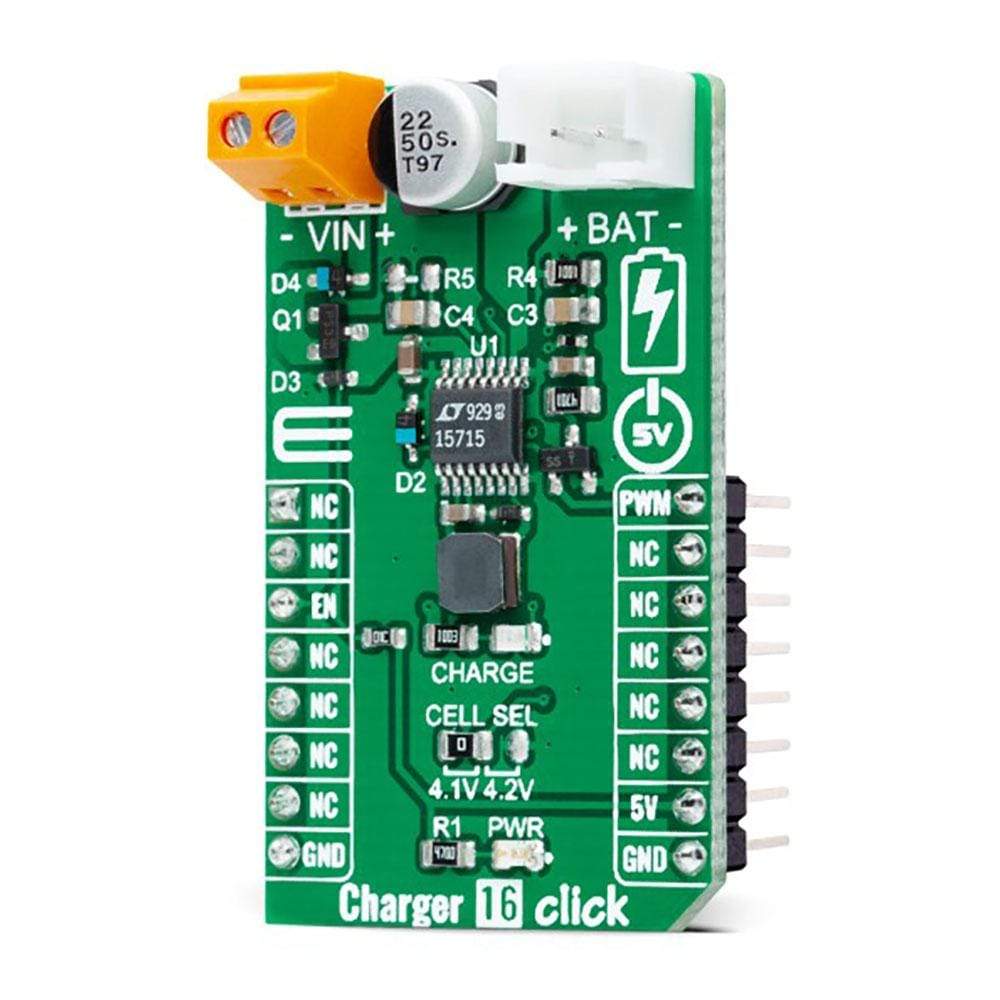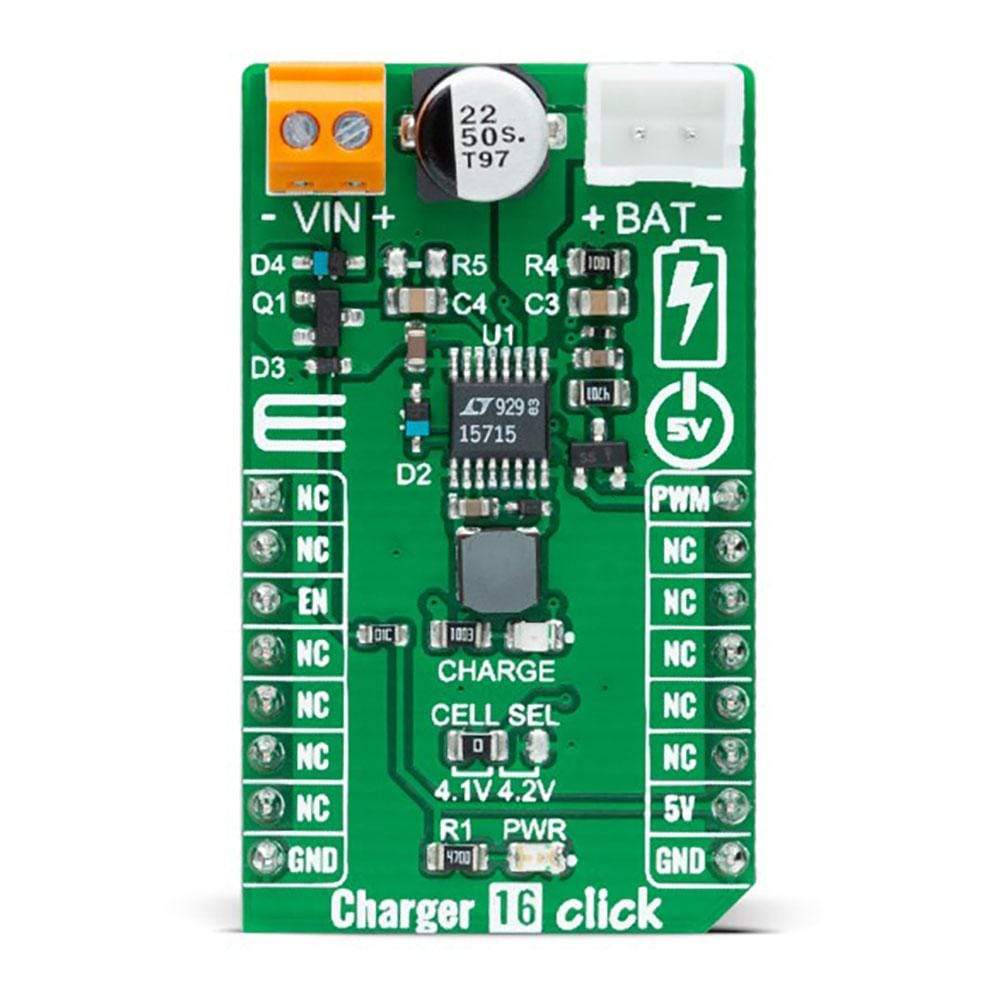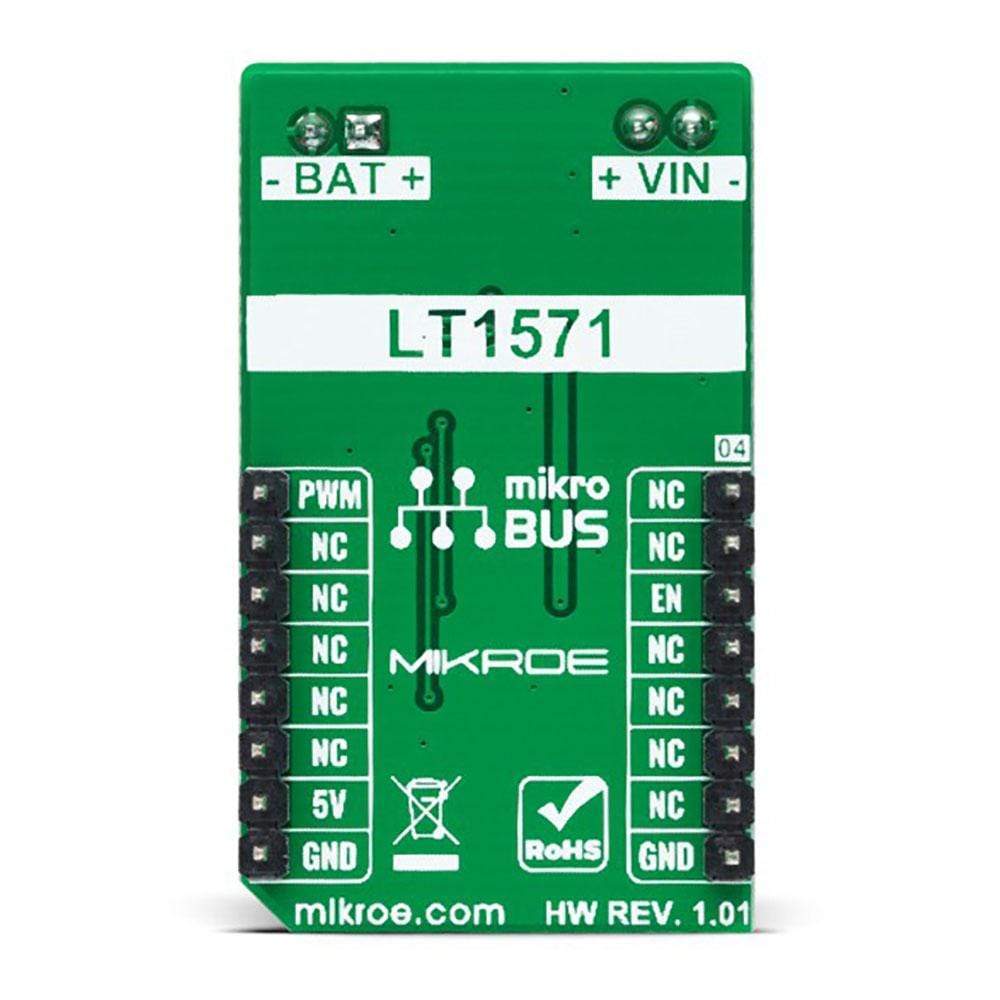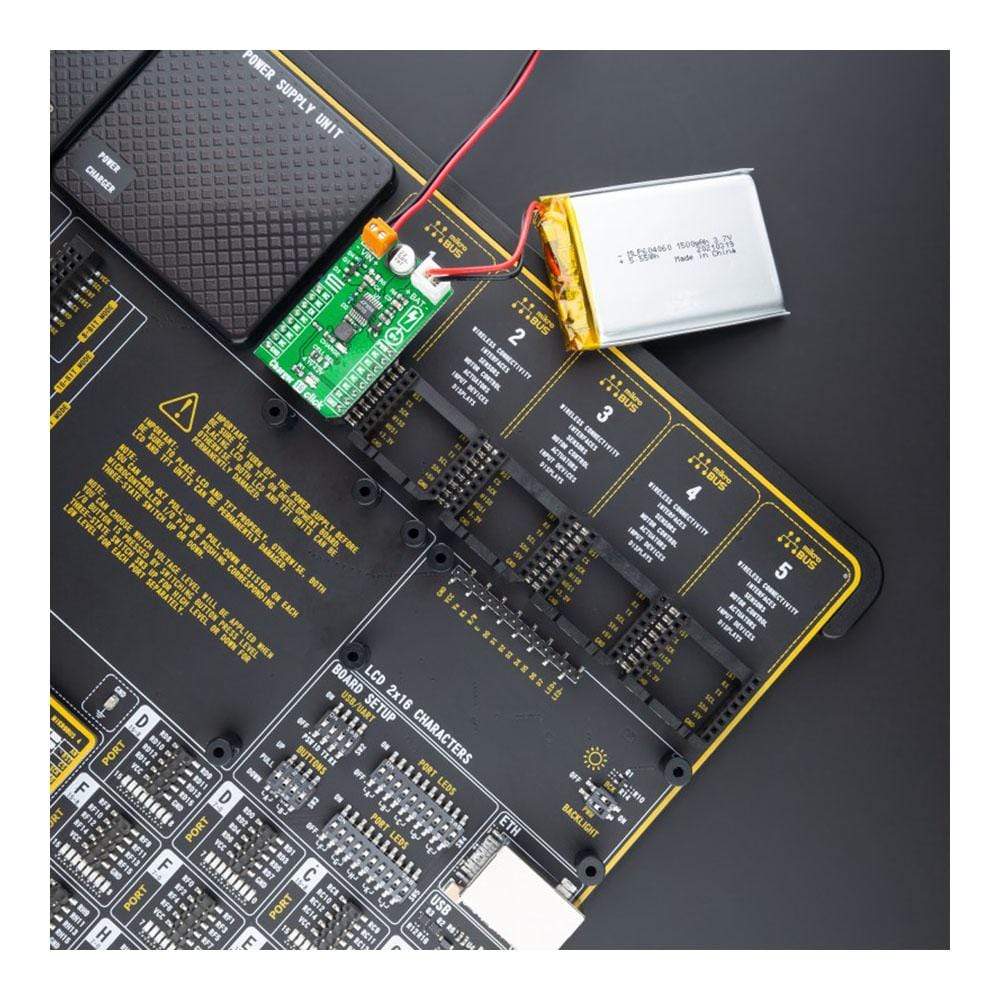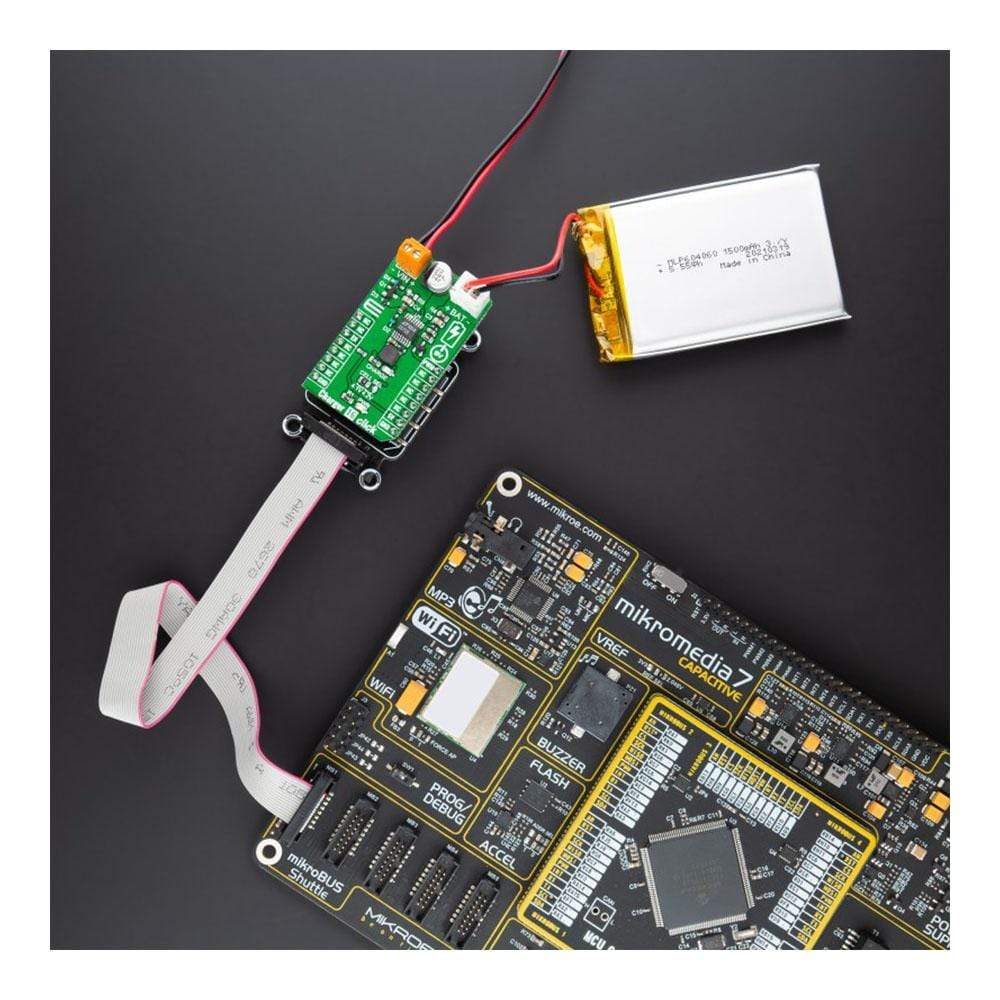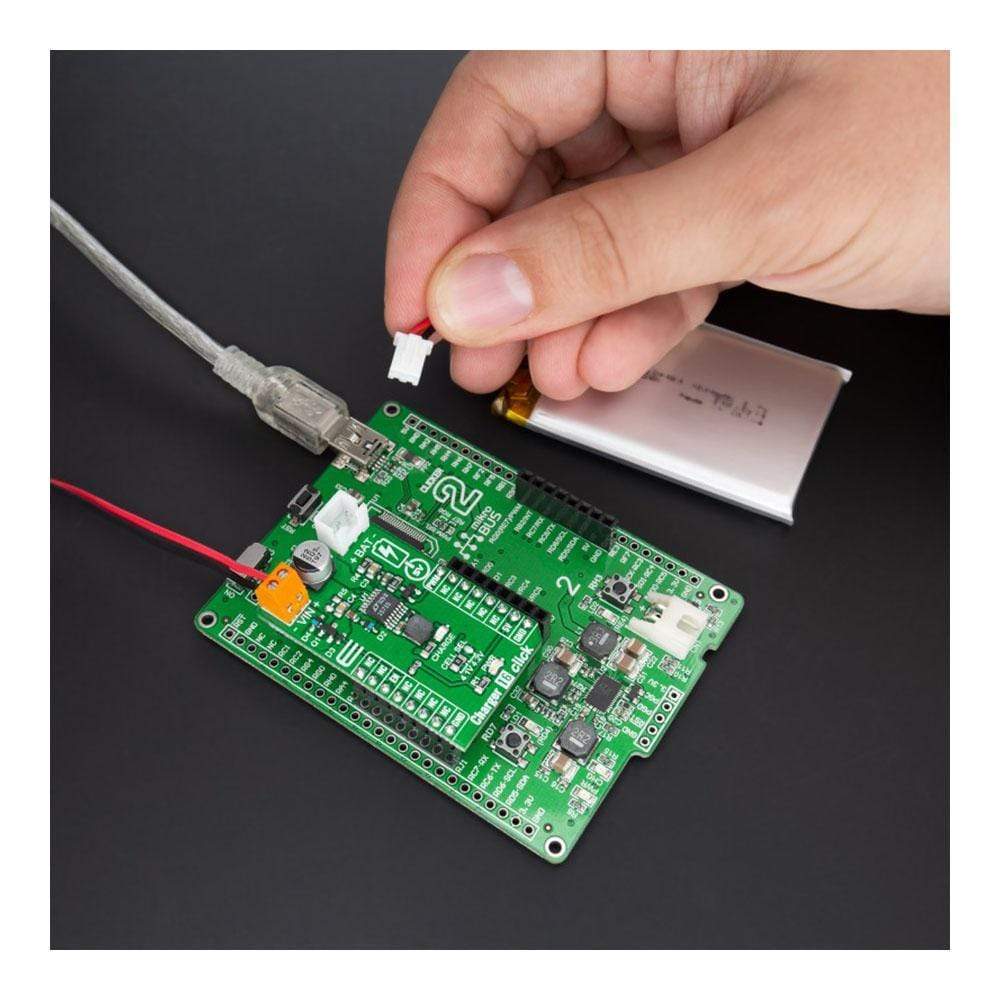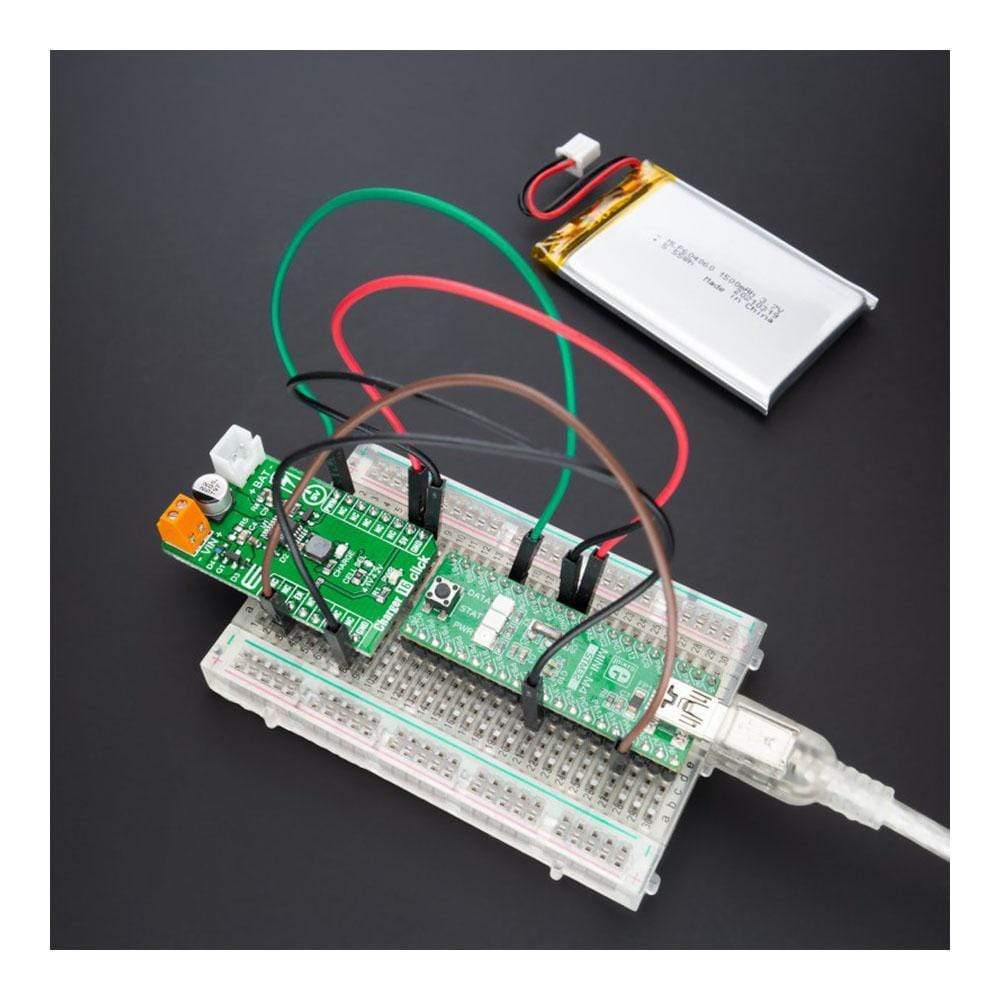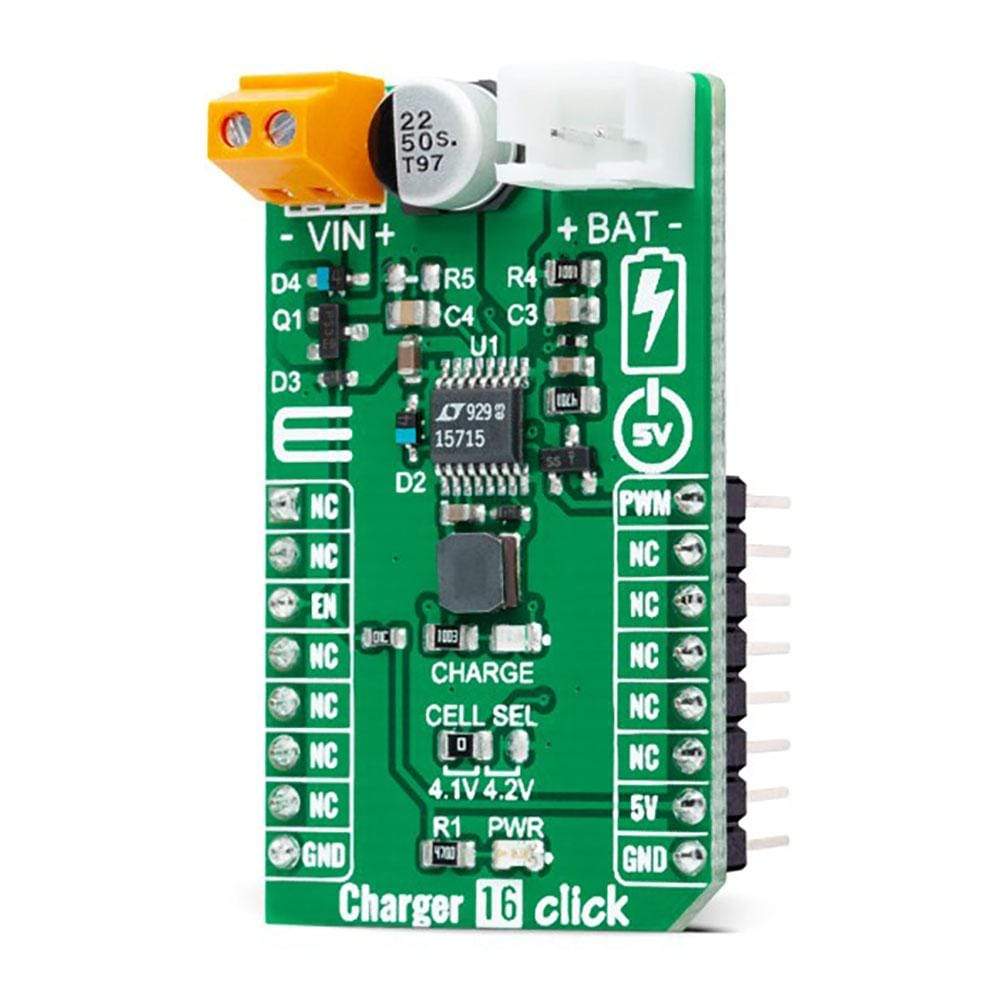
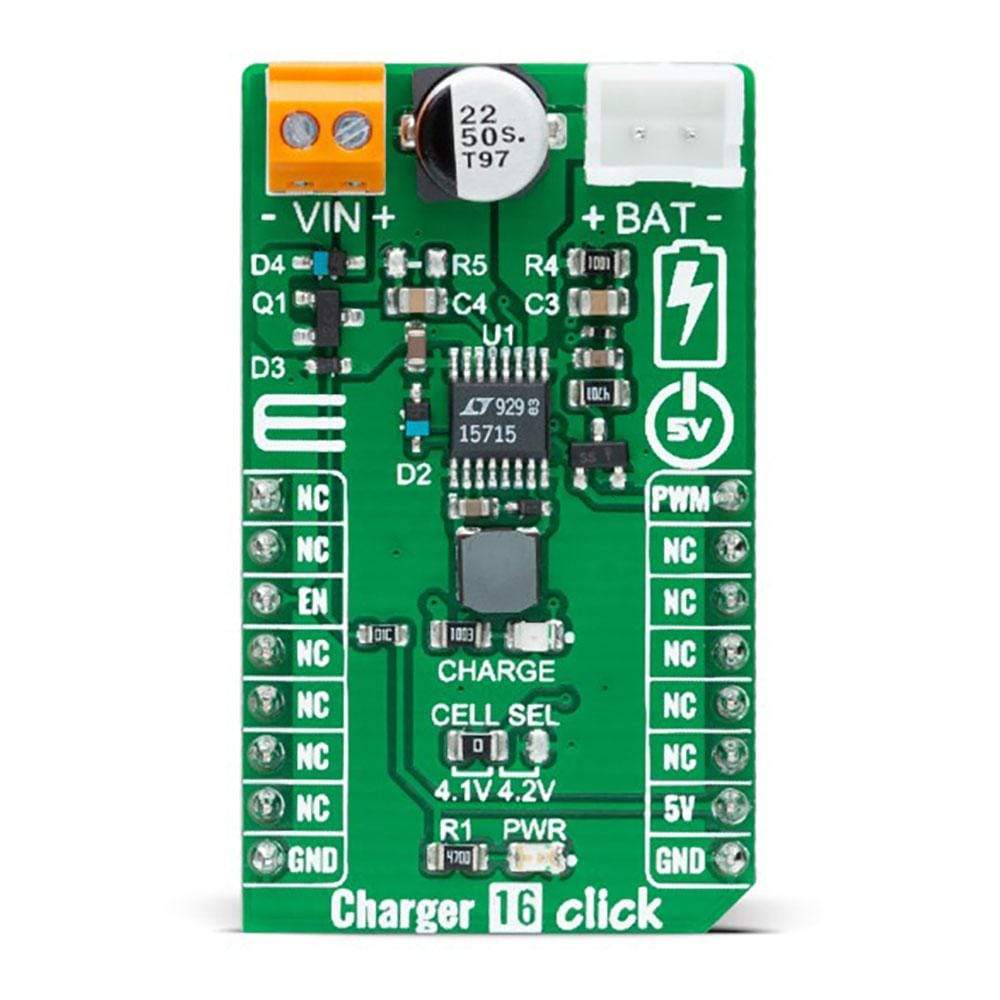
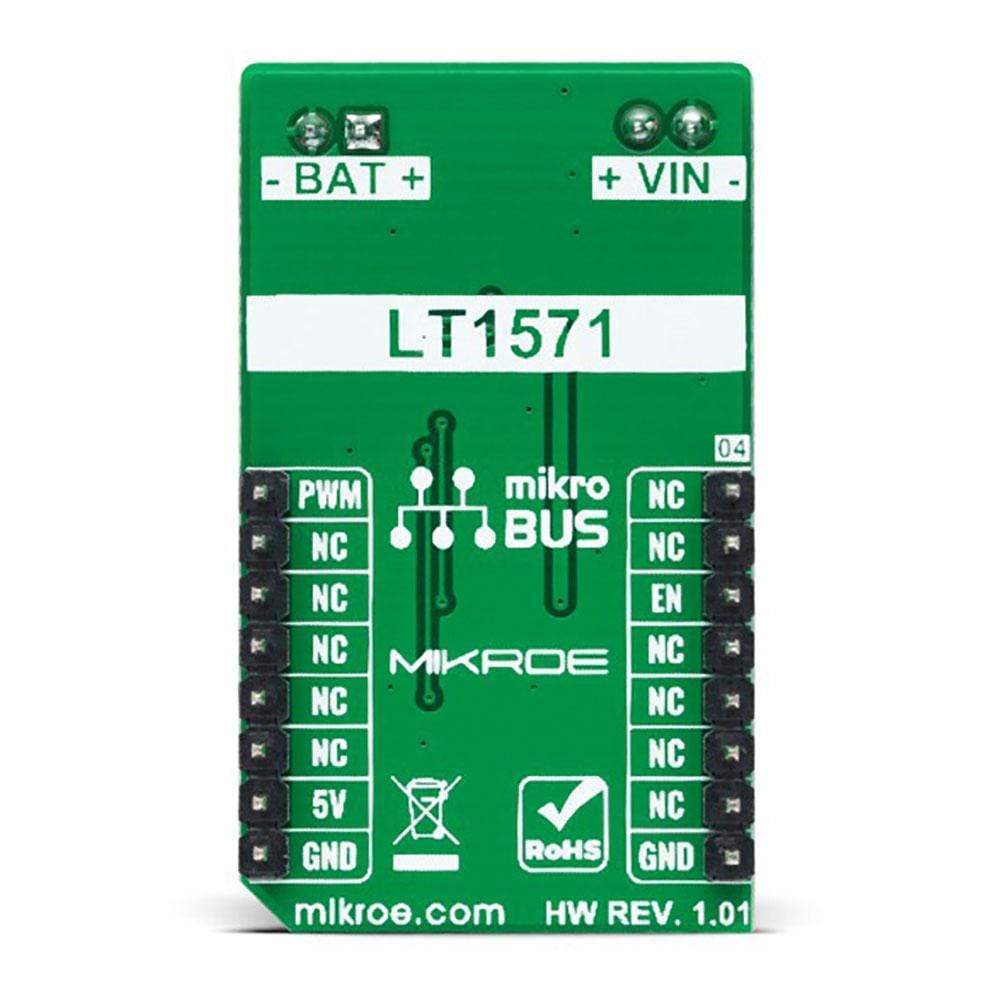
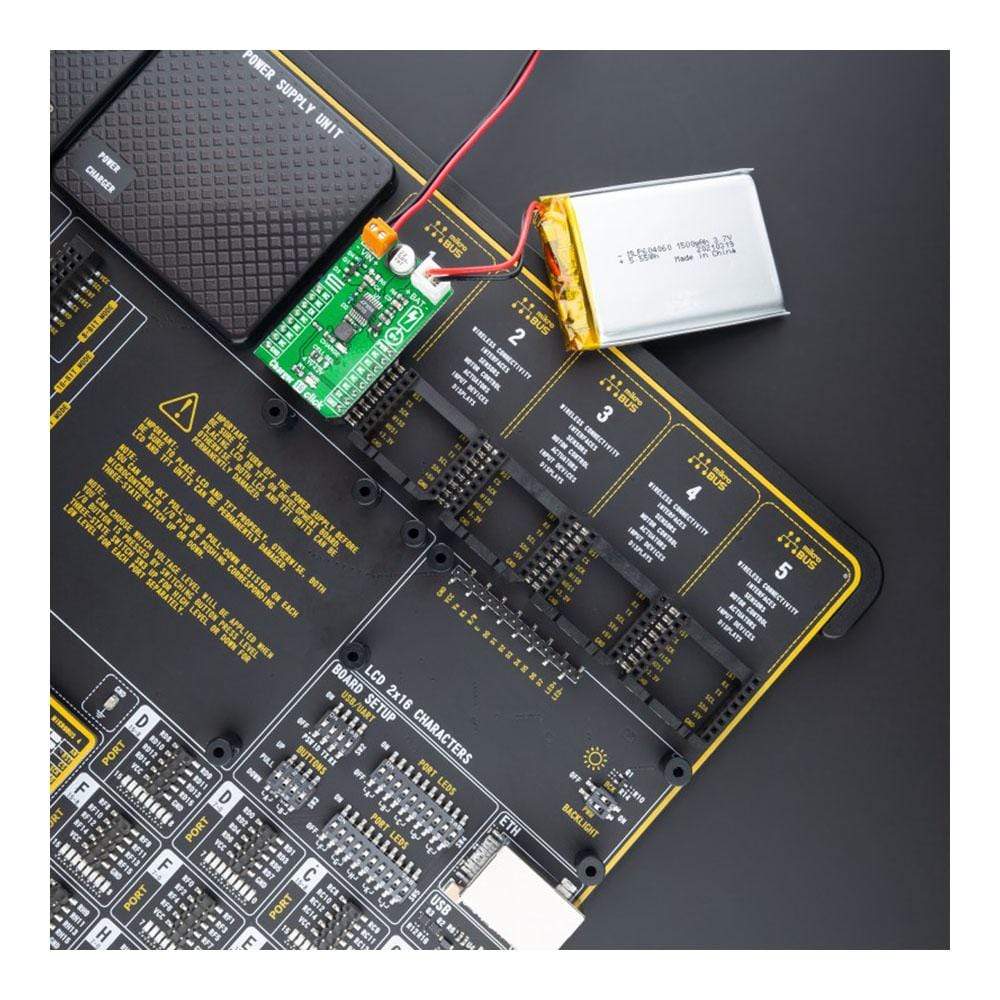
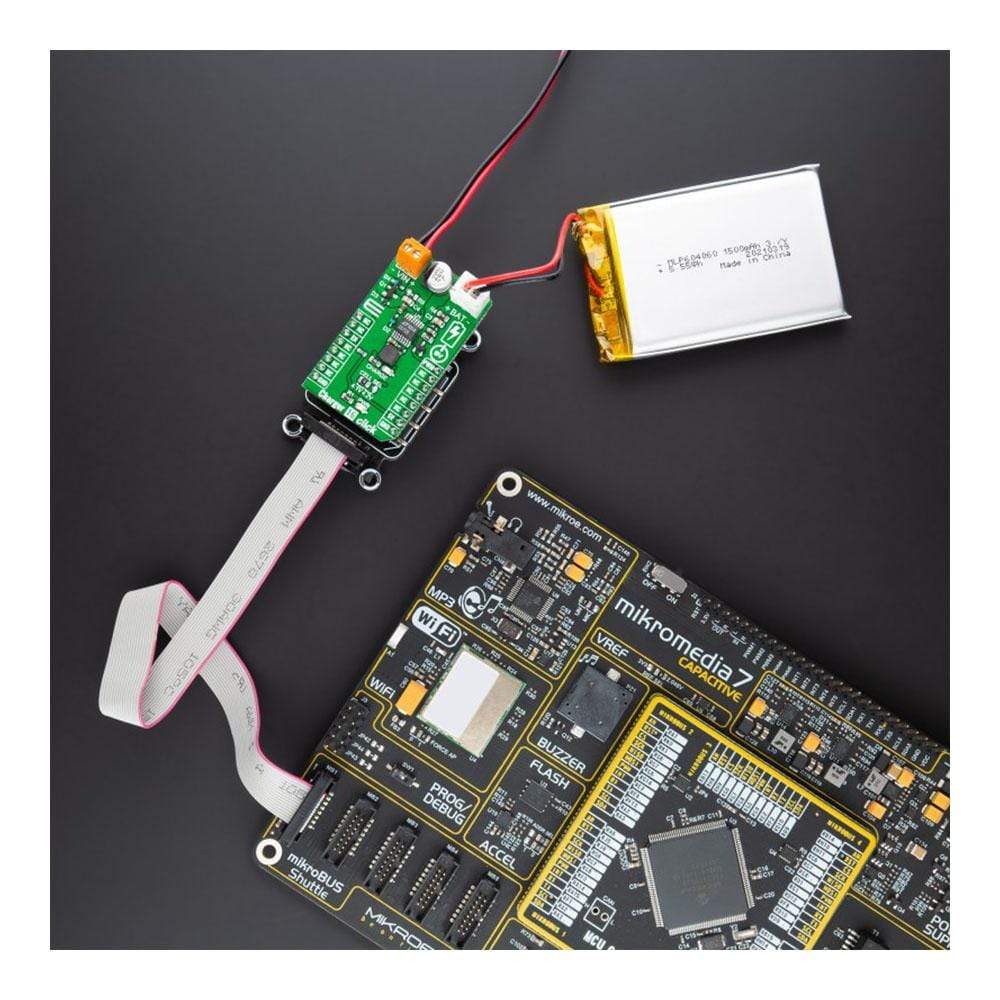
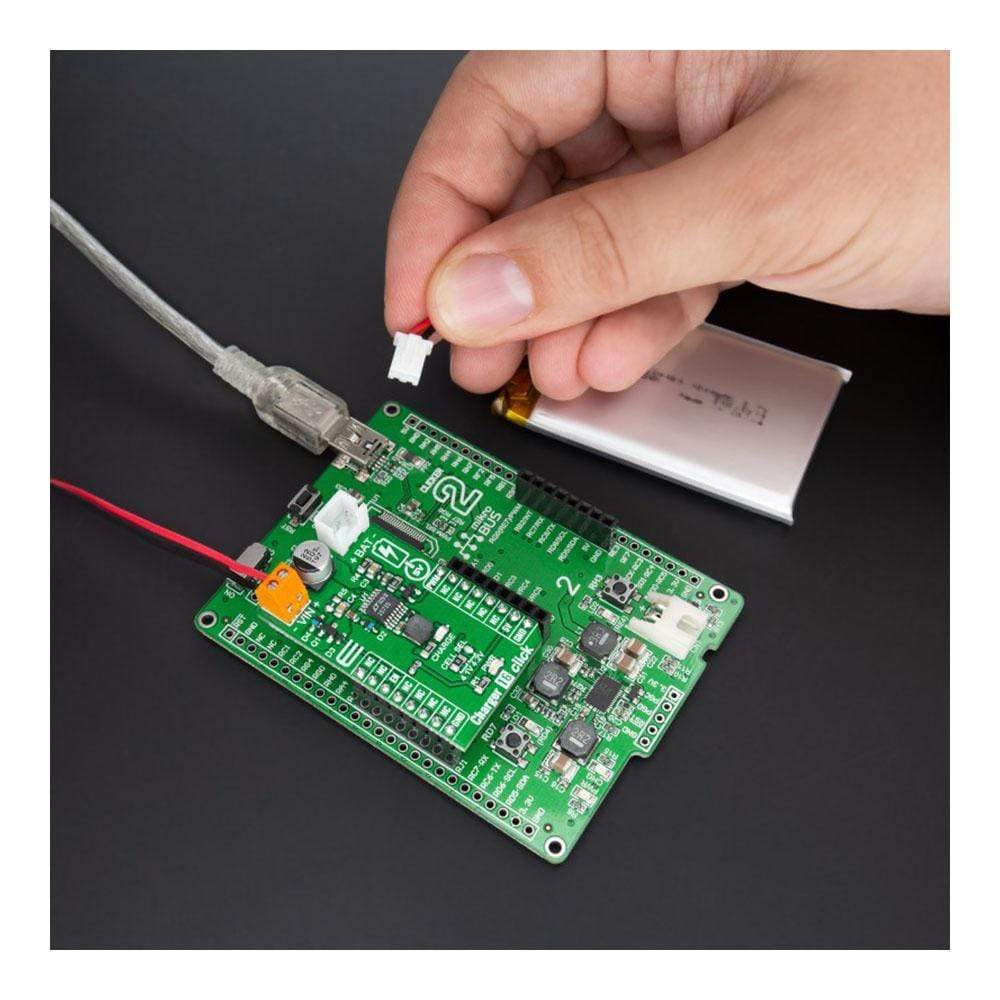
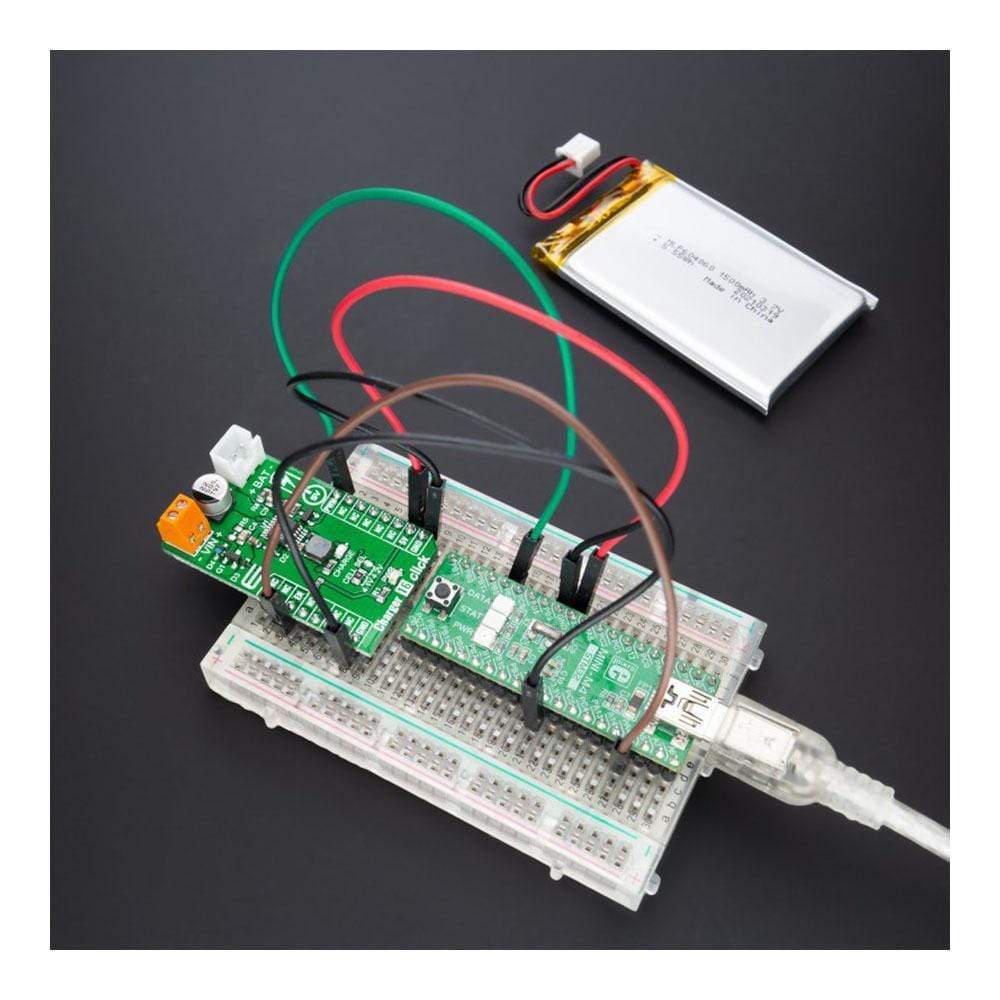
Overview
The Charger 16 Click Board™ is a compact add-on board that represents a single-cell battery charger. This board features the LT1571, a constant-current/constant-voltage battery charger with preset voltage and termination flag from Analog Devices. Powering up from an external power supply rated up to 20V, this Click Board™ has an onboard current sense resistor which allows simple charge current programming to within 5% accuracy. The internal switch is capable of delivering a 1.5A DC (2A peak current). It also comes with an indication for battery near full-charge state, when the charge current drops to 20% of the programmed value, and selectable constant voltage for 4.1V or 4.2V per cell with 0.6% accuracy. This Click Board™ is suitable as a Li-Ion, NiMH, NiCd battery charger for portable devices and accessories, power tools, and more.
The Charger 16 Click Board™ is supported by a mikroSDK compliant library, which includes functions that simplify software development. This Click Board™ comes as a fully tested product, ready to be used on a system equipped with the mikroBUS™ socket.
Downloads
Der Ladegerät 16 Click Board™ ist eine kompakte Zusatzplatine, die ein Einzelzellen-Akkuladegerät darstellt. Diese Platine verfügt über den LT1571, ein Akkuladegerät mit konstantem Strom/konstanter Spannung mit voreingestellter Spannung und Abschlussflagge von Analog Devices. Dieses Click Board™ wird über eine externe Stromversorgung mit bis zu 20 V versorgt und verfügt über einen integrierten Strommesswiderstand, der eine einfache Programmierung des Ladestroms mit einer Genauigkeit von 5 % ermöglicht. Der interne Schalter kann 1,5 A Gleichstrom (2 A Spitzenstrom) liefern. Es verfügt außerdem über eine Anzeige für den nahezu vollen Ladezustand des Akkus, wenn der Ladestrom auf 20 % des programmierten Werts abfällt, und eine wählbare Konstantspannung für 4,1 V oder 4,2 V pro Zelle mit einer Genauigkeit von 0,6 %. Dieses Click Board™ eignet sich als Li-Ion-, NiMH- und NiCd-Akkuladegerät für tragbare Geräte und Zubehör, Elektrowerkzeuge und mehr.
Das Charger 16 Click Board™ wird von einer mikroSDK-kompatiblen Bibliothek unterstützt, die Funktionen enthält, die die Softwareentwicklung vereinfachen. Dieses Click Board™ wird als vollständig getestetes Produkt geliefert und ist bereit für den Einsatz auf einem System, das mit der mikroBUS™-Buchse ausgestattet ist.
| General Information | |
|---|---|
Part Number (SKU) |
MIKROE-4768
|
Manufacturer |
|
| Physical and Mechanical | |
Weight |
0.02 kg
|
| Other | |
Country of Origin |
|
HS Code Customs Tariff code
|
|
EAN |
8606027383595
|
Warranty |
|
Frequently Asked Questions
Have a Question?
Be the first to ask a question about this.

